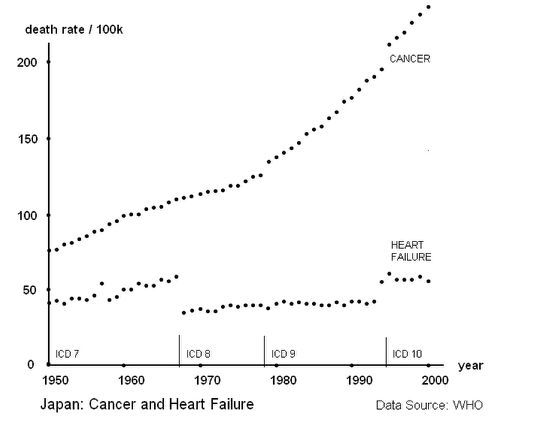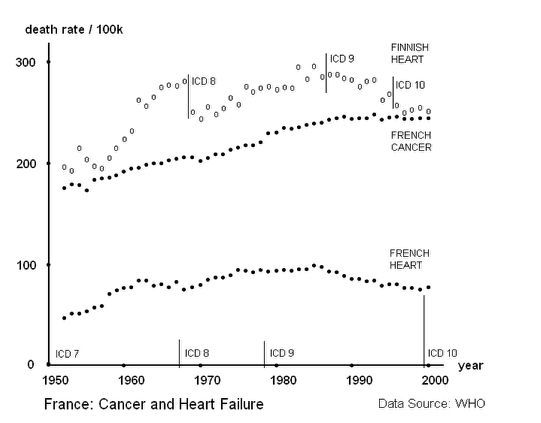
CANCER REPORT 2008:
on the MODE of COMMUNICATION of CANCER & HEART DISEASE
ISSN 1178-2994 Stephen G. Butcher
Author & Publisher: Stephen G. Butcher, "Harwood,"
RD4 Masterton, New Zealand.
Copies may be ordered from the above @ $8.00 incl. P&P. RRP $12.00 Online distribution $0.00
Second Edition: December 2008
ISSN 1178-2994
Copyright © 2008 S.G. and S.M. Butcher
CANCER REPORT:
on the Mode of Transmission of Cancer & Heart Disease.
This year's report summaries the last 12 months of cancer research. Part of that research is a case study of Auckland City, New Zealand, which shows reductions in both cancer and heart failure rates. These reductions parallel the reduction in conductive metal water pipes within Auckland's water reticulation system.
But first, a revision of previous years' research:
RESEARCH HISTORY FROM 2007:
The environmental change which facilitates cancer and is responsible for the post 1950 epidemic appears to be ionisation of water in conductive water pipes. I draw this conclusion from the following epidemiology:
Cancer death and heart failure rates parallel each other. For instance, here in New Zealand a case study of District Health Boards in the North Island shows this effect:
Historically, the heart failure epidemic often precedes the cancer epidemic, i.e. existed before 1950. For example, here in New Zealand the heart epidemic was already present in 1950 although the cancer epidemic did not start until after 1950 :
This suggests that an environmental change occurred around 1950 which changed water ionisation, and that cholesterol was subsequently unable to protect against this modified ionisation.
This year's research has looked at a possible way in which electrical bonding might be changing ions in reticulated water.
AC IONISATION:
To see how ion modification by AC power might be possible, we need to look at the way AC mains power is earthed:
Around 1950 it became mandatory to electrically bond conductive water pipes to the neutral side of AC power.
On the low voltage (240V) side of supply transformers in the multiple earth neutral (MEN) system there are 3 phase wires and 1 neutral, all the same gauge. This means that the higher resistance of neutral compared to the combined phases forces earth return to share some of the current.
Looking at one of those phases shows how water pipes are connected to neutral via a link between the neutral and earth busbars:
There are a number of earth returns, including:
• resistive through the ground itself, from the installation grounding rod to the transformer earth
• capacitive using earth's capacitance to complete the circuit, and
• resistive through water pipes and the earth's impedance.
This latter circuit ionises at both ends (unlike DC which ionises the negative end only):
(The ghosting behind the positive electrode in the DC photograph is a reflection off the back of the glass capsule.)
Therefore, the earthing cable at the transformer is ionised and the water pipe connected to AC neutral, via the busbar link, is also ionised.
Here in New Zealand, water pipes run down both sides of streets. One side is a larger bore fire main and the other a smaller bore rider main: both supply drinking water and both run parallel to, and close to, transformer earth cables.
It seems likely that as negative ionisation occurs outside the water pipe, an effect is induced within the pipe. It is conceivable that ionisation results in a change to hydrogen ions. These ions don't exist in isolation as hydronium ions but tend to form larger structures, e.g Eigen and Zundel ions, by bonding to surrounding water molecules. It may be that substitution occurs within these larger molecules such that an oxygen in the H30+ core is replaced with a carbon, which may then provide a ready 'food' supply for cancer replication.
Carbon is available in water because water absorbs carbon dioxide, some of which becomes carbonic acid. For instance, distilled water with a neutral pH quickly becomes slightly acid when exposed to the air because of the formation of carbonic acid.
Carbon is also available once the pH of treated water is adjusted by adding lime.
The ionisation voltages which occur at each end of the earth loop are quite small. Often when we think of ionisation we think of high voltages, which is true for gases but not for liquids. Many of the ionisation processes in liquids could be viewed as 'self ionising' in that only a very small voltage, say a few millivolts, is all that is required to tip the balance. Many processes in the human body, for instance, involve ionisation of liquids and require only this order of voltage to proceed.
It is my opinion that the very small voltages required to ionically change water in conductive water pipe can be reached when a pipe is electrically bonded to AC neutral. Apart from the AC system being fundamentally flawed because of the undersized neutral wire, it would only take a few defects, e.g. corrosion or loose connections, to force sufficient current through the impedance return, despite lower resistance paths through conduction and capacitance.
So we could say that chlorination of water provides a ready supply of hydrogen ions in addition to that which might otherwise naturally be there and these ions, as part of larger structures where they are bound to adjacent water molecules, look to be modified by ionisation caused by impedance between water pipes and mains power transformer earthing cables. The most likely scenario at this stage of research is the replacement of an oxygen with a carbon, possibly from carbonic acid.
AUCKLAND CITY CASE STUDY:
Auckland City is such a case. Most TLA's are not replacing aged metal pipes in favour of allowing a certain amount of leakage, but Auckland City replaced much of it's metal pipe when it reached the end of it's useful life (about 70 years). This pipe was largely installed in the period 1910 -1940 and replacement occurred around 1970 - 2000.
It can be seen that both heart failure and cancer reduced and the data on pipe materials, where available, also follows this reduction:
While data are limited, the amount of metal pipe installed is known and the current total length is known so it is reasonable to say that extrapolation back from 1997 would hold true.
This suggests that the effect of reducing the amount of conductive pipe is as immediate as the effect of adding chlorine, i.e. there is little or no time lag.
Both heart failure and cancer have gone down roughly together, but this case study has not controlled for residual chlorine over this period so the connection between conductive pipe and heart failure is as yet an open one. It may be that the reduction in heart failure is due to a reduction in residual chlorine, but if not then there are other questions to answer.
In both the Venezuela and the New Zealand DHB studies, heart failures and cancer deaths have moved in parallel. This also begs a question, is there a situation in which this does not hold true?
The following epidemiology looks at two examples.
SUPPORTING EPIDEMIOLOGY:
Japan is an example which shows much lower heart failure rates and much greater increases in cancer rates than similar countries (breaks in the heart graph line coincide with WHO ICD category changes and are likely to be due to changes in recording protocols ):
Partly, this is likely to be due to lactose intolerance. Children of these cultures wean in the full sense of the word: when they are weaned they can no longer easily accept milk or milk based products, so that particuler source of cholesterol is cut off.
More significantly, this is also likely to be due to the consumption of sake which is high in tannins, catechins, which inhibit cholesterol platelet function and, as a consequence, increase cancer rates.
So we might say that the reduction in cholesterol platelet function has the adverse effect of also reducing protection against cancer.
Other similar countries, such as Hong Kong and Singapore, display similar epidemiology, so a useful comparison might be made to a European country which also reduces cholesterol. France is one such country which displays a similar trend (Finnish heart failure is shown for comparison):
The lowered heart failure rate can be explained in this case by the consumption of red wine which lowers cholesterol levels and exposes the body to greater risk of cancer. Red wine has this effect because it also contains polyphenolic compounds, tannins, which inhibit platelet function.
So we can see that the effect of reducing cholesterol as an end in itself has the adverse effect of exposing the body to greater risk of cancer. This would not only call into question the practice of reducing cholesterol (and not looking at the reason for it being there) but also the advice to drink 8 glasses of water a day for good health where to do so risks greater exposure to cancer.
SUMMARY:
It is becoming increasingly clear that the post war cancer and heart failure epidemics are related, and have common environmental causes. While there are complexities in the way these diseases correlate, the epidemiology shows a distinct parallel incidence and my conclusion from the 2007 report still stands, i.e. that cancer and heart failure are presentations of the same environmental factors: ionisation (e.g. from chlorine) and it's modification (i.e. by AC power).
If chlorine is added to drinking water, then heart failure rates go up. If conductive water pipes are electrically bonded to AC power neutral, then cancer rates go up - especially so if chlorine is added to the water supply. Chlorine adds to the supply of hydrogen ions that might naturally exist in a water supply and so has the effect of accentuating the effect that electrical bonding has on cancer rates.
But there still exists the question as to why one form of ion should have a different effect than another or, put another way, why one form of ion should be protected against while another is not?
CONCLUSION:
The difference between water which has damaging ions affecting heart failure and water which has damaging ions affecting cancer suggests that there is a fundamental difference in the nature of water once it is electrically changed, in addition to any modification of or substitution within the ions themselves.
If we say that there is a gaseous state, a liquid state and a solid state then we should also say that there is a plasma state. Applying these four states to water we could hypothesize that water affecting heart failure is in the liquid state whereas water affecting cancer is at least partly in the plasma state.
If this is so, then water containing plasma would have a balance of positive ions and negative electrons, be affected electromagnetically, and be highly conductive. It may be that this plasma behaves in a different way to water once ingested, and so relates to the post-1950 cancer epidemic.
Stephen Butcher (B. Arch)
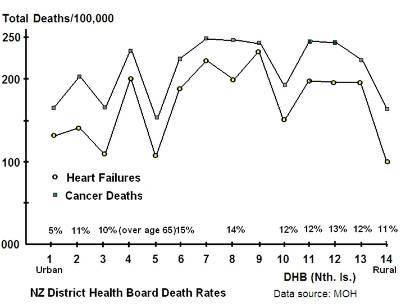

This suggests that there is a common factor to these diseases, i.e. they are not so much diseases as presentations of the same environmental factors.
Cancer and heart failure rates in Venezuela, where chlorination was increased after an outbreak of cholera in Peru around 1990, also show this effect:


The simultaneous increases in both rates are clearly outside the pre-1990 data ranges.
An increase in heart failure rates can be explained in terms of free radicals. When chlorine is added to water it produces hydrochloric acid which almost completely dissociates to form hydrogen ions. The human body protects itself by using cholesterol. A continued assault by hydrogen ions as a result of continued consumption of chlorinated water results in an accumulation of cholesterol until ischaemic heart failure occurs from a lack of oxygen to the heart muscle.
Heart failure and cancer follow the same pattern, so we could say that it is likely that cancer is also related to ions.
The earliest record of the cancer epidemic is 1950. In Japan, for instance, there was no evidence of an epidemic until after 1950:
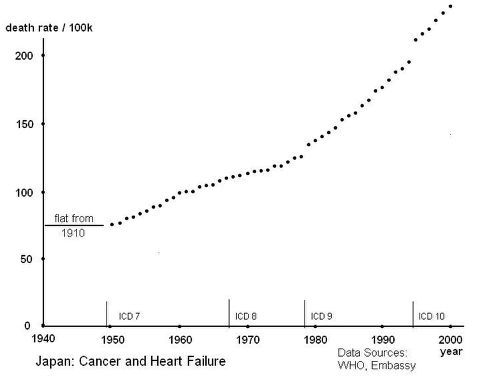
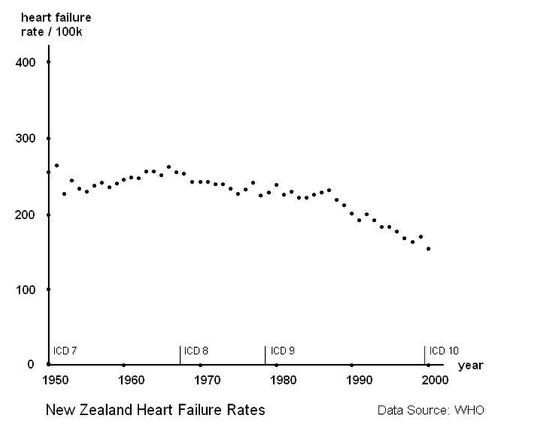
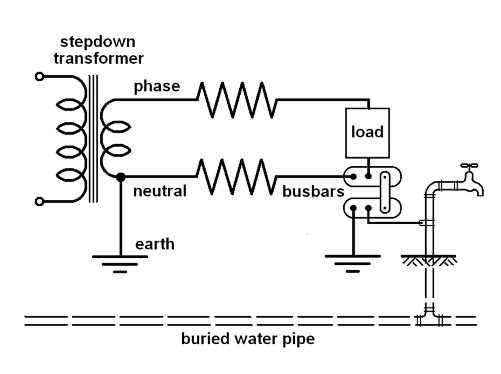
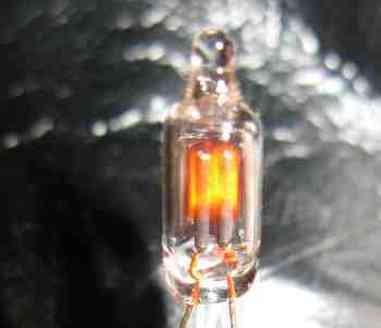
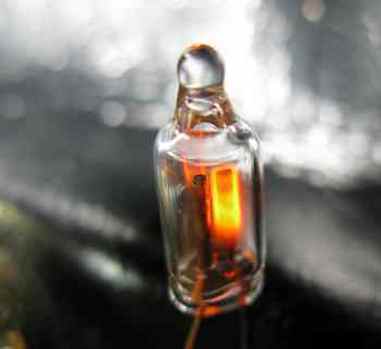
Last year's report graphed cancer rates against the percentage of conductive water pipe in each Territorial Land Authority (TLA) in the North Island of New Zealand and showed that the higher the percentage of conductive pipe then the higher the cancer rate. That begged the question, is it possible to find a TLA which has reduced the amount of conductive pipe in it's reticulation system and, if there is, does the rate of cancer go down?

